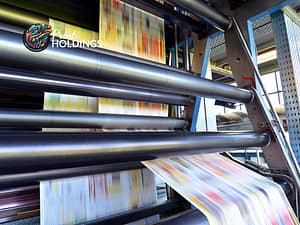Heat stress poses a significant risk to workers in hot environments, impacting their health, productivity, and overall safety. It occurs when the body cannot sufficiently cool itself, leading to heat exhaustion, heat stroke, and other heat-related illnesses.
Understanding Heat Stress
Heat stress results from prolonged exposure to high temperatures, especially when combined with high humidity and physical labor. It can severely affect workers in industries such as construction, manufacturing, and agriculture, where conditions often exacerbate the body’s challenge to maintain a normal temperature.
The Role of Safety Workwear
The right safety workwear is crucial in mitigating heat stress. It is designed to offer protection while enabling the body to regulate temperature more effectively. Innovative materials and technologies in safety workwear play a vital role in preventing heat-related illnesses by enhancing comfort and safety in hot working conditions.
Identifying Heat Stress Risks
Risk Factors for Heat Stress
Several factors contribute to heat stress risk, including high ambient temperatures, direct sun exposure, high humidity levels, lack of air movement, and physically demanding tasks. Identifying these risk factors is the first step in developing strategies to mitigate heat stress.
Signs and Symptoms of Heat Stress
Early recognition of heat stress signs is crucial for timely intervention. Symptoms include excessive sweating, fatigue, dizziness, nausea, headache, and increased heart rate. Recognizing these early signs can help prevent more serious conditions like heat stroke, which can be life-threatening.
Technologies in Workwear to Combat Heat Stress
Breathable Fabrics
Breathable fabrics are engineered to allow air to circulate close to the skin, facilitating natural body cooling by evaporation of sweat. These materials significantly reduce heat retention, making them ideal for safety workwear in hot conditions.
Moisture-Wicking Technologies
Moisture-wicking technologies enhance the body’s natural cooling processes by quickly moving sweat away from the skin to the outer layer of the fabric, where it can evaporate more efficiently. This not only helps keep the body cool but also prevents the discomfort of damp clothing against the skin.
Innovative Workwear Solutions
As workplaces strive to enhance safety, particularly in combating heat stress, innovative solutions in workwear have become pivotal. Two significant advancements include cooling vests and hydration-integrated workwear, offering new avenues for heat stress management.
Cooling Vests
Cooling vests are designed to reduce body temperature during high heat exposure. They come in various types, each with unique mechanisms to combat heat:
- Phase Change Material (PCM) Vests: These vests contain substances that melt or freeze at a specific temperature. They absorb heat from the body when the material changes from solid to liquid, providing cooling relief.
- Evaporative Cooling Vests: Made from a special fabric that retains water, these vests cool the body as the water evaporates, similar to the body’s natural cooling mechanism.
- Circulating Cool Water Vests: These involve a system that circulates cold water around the body, offering continuous cooling.
Each type offers different levels of effectiveness, depending on the working environment’s conditions and the duration of exposure to heat.
Hydration Solutions in Workwear
Hydration is crucial in preventing heat stress, and some workwear integrates hydration systems to ensure workers maintain fluid intake. These solutions include built-in hydration bladders with easy-access drinking tubes, allowing continuous hydration without disrupting work. Such systems are particularly beneficial in environments where taking breaks for water may be challenging, ensuring hydration is a constant priority.
Best Practices for Heat Stress Management
Proper Workwear Selection
Selecting the right workwear is critical in minimizing heat stress risks. Considerations should include:
- Material: Opt for lightweight, breathable, and moisture-wicking fabrics.
- Fit: Ensure workwear is not too tight, allowing for adequate air circulation.
- Color: Light colors reflect heat better than dark colors, offering additional cooling.
- Technology: Consider workwear with advanced cooling technologies, such as cooling vests or moisture-wicking materials, for enhanced heat stress prevention.
Workwear Maintenance
Maintaining workwear is essential for its longevity and effectiveness. Tips include:
- Regular Cleaning: Follow manufacturer instructions for cleaning to preserve the material’s integrity and cooling properties.
- Inspection: Regularly check for damage or wear, especially in cooling systems, to ensure they function correctly.
- Storage: Store workwear in a cool, dry place to prevent mold growth and preserve cooling technologies.
Training and Awareness
In addressing heat stress in the workplace, training and creating a culture of safety are paramount. These elements ensure that workers are not only equipped with the right tools but also have the knowledge to use them effectively.
Educating Workers on Heat Stress Prevention
Educational programs on heat stress prevention are essential for workers exposed to high temperatures. Such training should cover:
- Recognizing Early Signs: Teaching workers to identify symptoms of heat stress in themselves and others.
- Effective Response: Providing clear guidelines on what actions to take when signs of heat stress are observed.
- Hydration and Rest: Emphasizing the importance of regular hydration and taking breaks in shaded or cooled areas.
Creating a Culture of Safety
Fostering a workplace culture that prioritizes safety encourages proactive measures against heat stress. This involves:
- Leadership Commitment: Leaders should actively promote and participate in safety practices.
- Worker Involvement: Engaging workers in discussions about safety measures and improvements creates a sense of ownership and responsibility.
- Continuous Education: Regular updates and refreshers on safety practices help maintain a high level of awareness and preparedness.
Regulatory Standards and Compliance
Adhering to regulatory standards is not only a legal obligation but a moral one, ensuring worker safety is upheld.
Compliance with Safety Regulations
Familiarizing oneself with and adhering to OSHA guidelines and other relevant safety regulations is critical. This includes:
- Heat Stress Management Plans: Implementing strategies that meet legal requirements for worker safety in hot environments.
- Proper Workwear: Ensuring the safety workwear provided meets the specific standards required for different job roles and environments.
Staying Updated on Industry Standards
The field of occupational safety is always evolving, with new technologies and materials emerging. Staying informed about:
- Latest Workwear Technologies: Keeps the company at the forefront of safety practices.
- Changes in Regulations: Ensures compliance and protection against potential legal and health implications.
Conclusion
Managing heat stress in the workplace requires more than just providing the right workwear; it demands a comprehensive approach that includes education, culture building, and adherence to regulations. The selection, use, and maintenance of safety workwear are crucial, but equally important is the training and awareness that empower workers to use these tools effectively. A proactive stance on heat stress management not only safeguards worker health but also contributes to a more productive, engaged, and safe workplace environment. This comprehensive approach ensures that workers are protected, informed, and equipped to handle the challenges of working in hot conditions, exemplifying the commitment to their well-being and safety.












